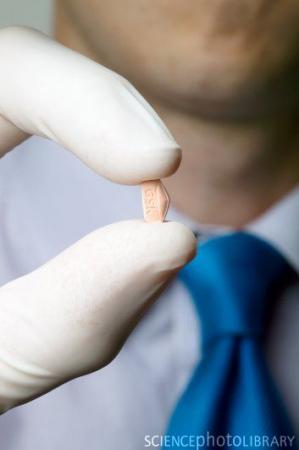
在今天,患Ⅱ型糖尿病的人数正在不断增长。(图)
Ⅱ型糖尿病,又名非胰岛素依赖型糖尿病(NIDDM),易出现非酮症高血糖高渗性昏迷(NKHHC)。常见慢性微血管并发症有视网膜病变,肾脏病变,周围神经及植物神经病变。大血管并发症有动脉粥样硬化性心脏病,外周血管病变。
美国哈佛大学公共卫生学院的科学家们发现,食用未煮熟的肉类会提高患Ⅱ型糖尿病的风险。同时研究还指出,多食用低脂肪的牛奶、坚果和谷类能明显降低患病的几率。
这项研究的论文发表在最新一期的《American Journal of Clinical Nutrition》杂志上。
论文的第一作者,公共卫生学院营养部门的An Pan和论文的通讯作者,营养和流行病学教授Frank Hu分析了随访长达20年的37,038位男性,随访了28年的79,570位女性,以及随访了14年的87,504的女性的调查问卷,并结合他们之前的研究纳入的例数,研究共纳入了442,101人,其中患有Ⅱ型糖尿病的人数为28,228。在随后进行了meta分析,通过排除年龄、性别、种族、生活方式等等因素的影响,研究者们最后发现每天食用约100g未加工生肉类的人患Ⅱ型糖尿病的几率要高出正常人19%,并且还发现每天食用加工后生肉50g的人患Ⅱ型糖尿病的几率要高出正常人51%。
Hu教授说道:“显然,这对现在患Ⅱ型糖尿病人数不断增加的国家和食用大量生肉的人是一个警示。但好消息是,我们能很轻易的改掉这些不健康的饮食习惯。”
研究还发现那些食用坚果取代生肉的人患Ⅱ型糖尿病的风险要降低21%,食用低脂牛奶要降低17%,食用谷类要降低23%。
基于这项研究的结果,科学家们建议那些加工后生肉(如热狗、咸猪肉、香肠等等,这些食物通常含有大量的亚硝酸钠)应尽量少食用,如果条件允许,应当把这些日常食用的生肉取代为更健康的低脂牛奶、坚果、谷类、鱼和豆类等等。(生物探索 Jun译)
生物探索推荐英文论文原文摘要:
Red meat consumption and risk of type 2 diabetes: 3 cohorts of US adults and an updated meta-analysis
Background: The relation between consumption of different types of red meats and risk of type 2 diabetes (T2D) remains uncertain.
Objective: We evaluated the association between unprocessed and processed red meat consumption and incident T2D in US adults.
Design: We followed 37,083 men in the Health Professionals Follow-Up Study (1986–2006), 79,570 women in the Nurses’ Health Study I (1980–2008), and 87,504 women in the Nurses’ Health Study II (1991–2005). Diet was assessed by validated food-frequency questionnaires, and data were updated every 4 y. Incident T2D was confirmed by a validated supplementary questionnaire.
Results: During 4,033,322 person-years of follow-up, we documented 13,759 incident T2D cases. After adjustment for age, BMI, and other lifestyle and dietary risk factors, both unprocessed and processed red meat intakes were positively associated with T2D risk in each cohort (all P-trend <0.001). The pooled HRs (95% CIs) for a one serving/d increase of unprocessed, processed, and total red meat consumption were 1.12 (1.08, 1.16), 1.32 (1.25, 1.40), and 1.14 (1.10, 1.18), respectively. The results were confirmed by a meta-analysis (442,101 participants and 28,228 diabetes cases): the RRs (95% CIs) were 1.19 (1.04, 1.37) and 1.51 (1.25, 1.83) for 100 g of unprocessed red meat and for 50 g of unprocessed red meat, respectively. We estimated that substitutions of one serving of nuts, low-fat dairy, and whole grains per day for one serving of red meat per day were associated with a 16–35% lower risk of T2D.
Conclusion: Our results suggest that red meat consumption, particularly processed red meat, is associated with an increased risk of T2D.







